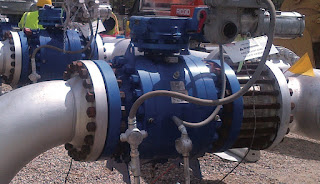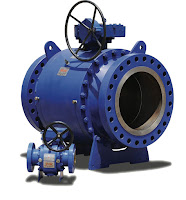Accurate dosing of corrosion inhibitors in industrial applications, especially in the chemical, process and oil and gas industry can be a real challenge. These industries cope with demanding environmental and process conditions in production and operation. In oil and gas, it is common that wells produce other products that are likely to cause corrosion, such as water and carbon dioxide. Pipelines are required to transport oil and gas products from the well, sometimes over long distances. Even though they are designed to last for decades, corrosion processes are responsible for degradation and significant losses. It is clear that the best way to combat corrosion economically is through prevention using chemical inhibitors.
A corrosion inhibitor system will add small concentrations of (bio)chemicals into the process which form a film on the interior surface of the pipe or vessel, preventing corrosive attack. The effectiveness of an inhibitor system greatly depends on the correct injection amount, and can be influenced by the environmental and process conditions; so accuracy is crucial here.
A properly applied chemical corrosion inhibitor system is very effective in lowering corrosion rates, with the potential to reduce corrosion rates up to 99%.
The key in determining the overall rate of corrosion over the life of a pipeline is determined by the proportion of time for which the corrosion inhibitor is available, and the correct concentration. In order to accurately assess the availability of corrosion inhibitor, it is necessary to have some means of accurately measuring the dosage of inhibitor being injected.

Using a
low flow control system containing a
mass flow controller (MFC) allows for very accurate corrosion inhibitor dosing. High accuracy and high turndown ratio is achieved based on pure mass flow measurement with this type of flow meter. A device such as the
Bronkhorst (mini)
CORI-FLOW mass flow controller can directly control valves and pumps via it's on-board PID controller, and be further optimized with ancillary PLC and HMI controls, extending both performance and flexibility.
The application of chemical corrosion inhibitors can significantly reduce the rate of corrosion and using a dosing system with an integrated MFC (such as the
Bronkhorst (mini) CORI-FLOW) enables real-time monitoring, control and logging of injection rates. This allows online checking of flow rates and instantaneous re-setting of the required flow rate. Asset management and preventive maintenance is supported with several active diagnostics.
For more information about mass flow controllers used in chemical dosing applications, contact
Swanson Flo by calling
800-288-7926 or visit
https://swansonflo.com.







